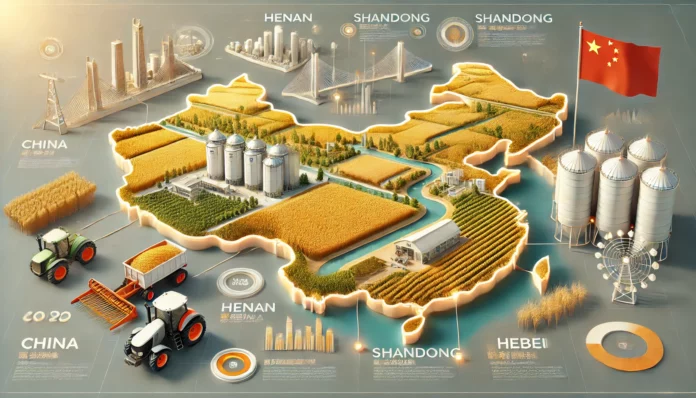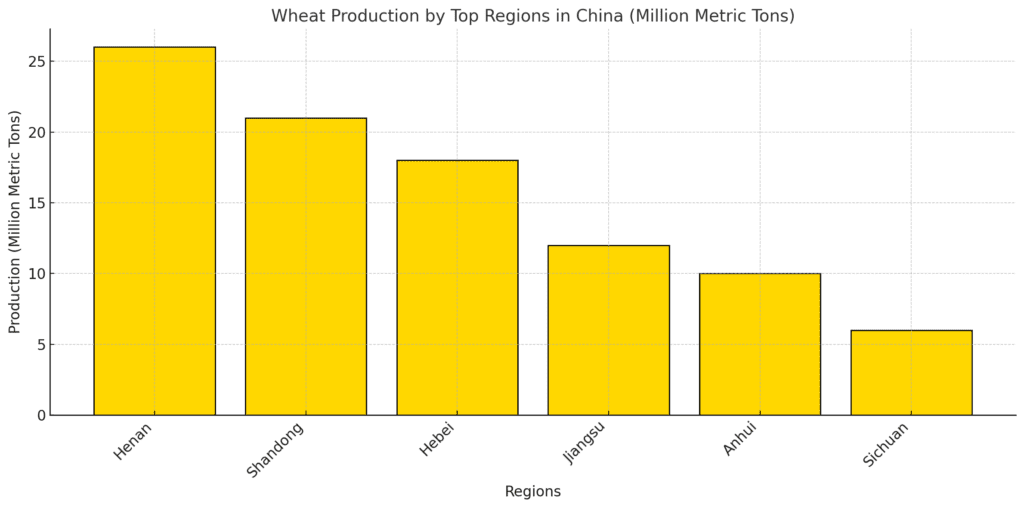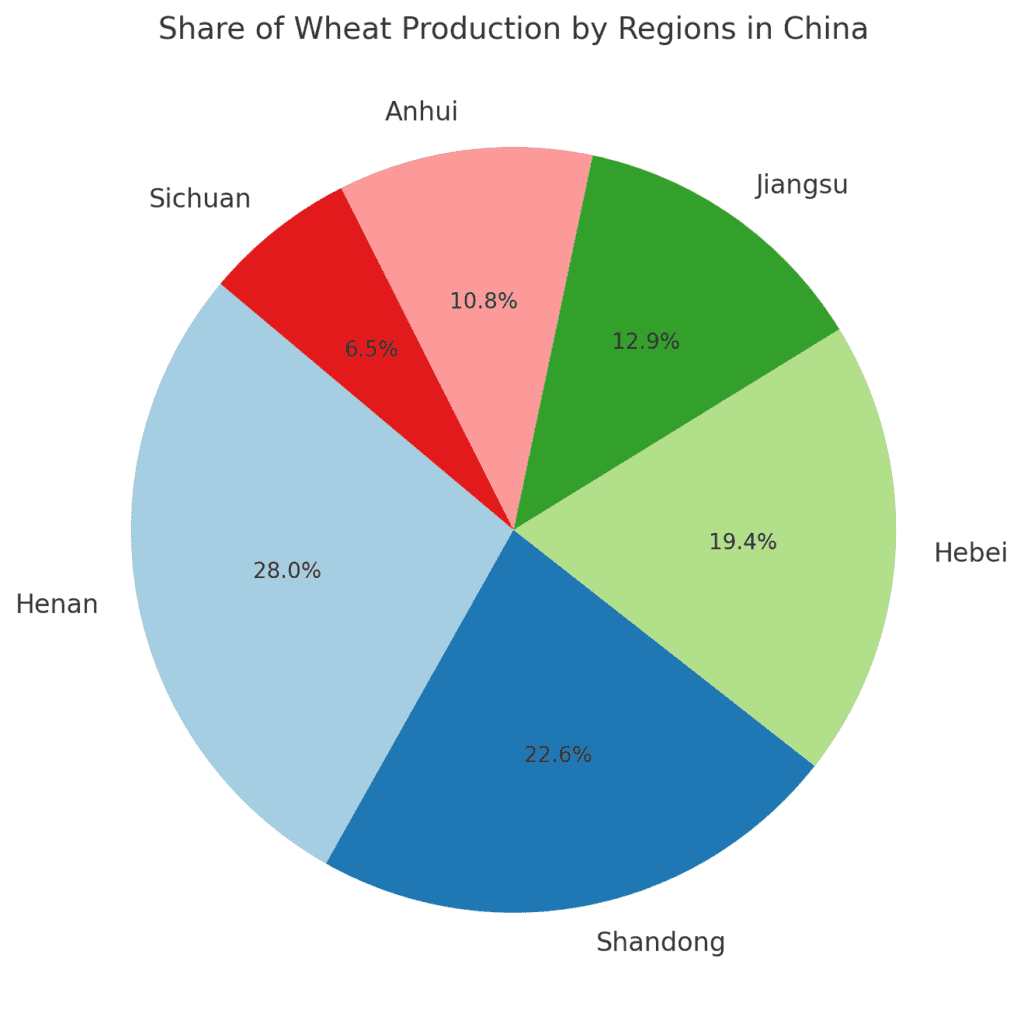
China is the world’s largest wheat producer, accounting for over 17% of global production. Wheat is a staple crop in the country, serving as a dietary cornerstone for over a billion people. The nation’s success in wheat production is driven by several key regions that leverage fertile soils, advanced agricultural practices, and government support. Here’s a closer look at the largest wheat-producing regions in China, their contributions, and their significance in ensuring food security.

1. Henan Province: The Wheat Powerhouse
Henan is often referred to as the “Granary of China” due to its dominance in wheat production.
- Annual Production: Approximately 26 million metric tons.
- Key Characteristics: Fertile soils and a favorable climate for winter wheat cultivation.
- Innovations: Adoption of precision agriculture, laser leveling, and efficient irrigation techniques.
- Significance: Henan accounts for nearly 20% of China’s total wheat output, making it critical for national food security.
2. Shandong Province: A Major Wheat Producer
Shandong is one of China’s most agriculturally productive provinces, with wheat as a primary crop.
- Annual Production: Around 21 million metric tons.
- Key Characteristics: Well-drained soils and access to advanced farming technology.
- Innovations: Extensive use of hybrid wheat varieties and water-saving irrigation systems.
- Significance: Supplies wheat for both domestic consumption and flour production.
3. Hebei Province: A Key Contributor to China’s Wheat Basket
Hebei is another major wheat-producing region in northern China, benefiting from its temperate climate.
- Annual Production: Approximately 18 million metric tons.
- Key Characteristics: Large-scale farms and government-backed agricultural programs.
- Innovations: Emphasis on pest-resistant wheat varieties and soil health improvement.
- Significance: Hebei’s production supports neighboring provinces and major urban centers like Beijing.
4. Jiangsu Province: Supporting Southern Wheat Demand
Jiangsu plays a vital role in balancing wheat production across southern China.
- Annual Production: Around 12 million metric tons.
- Key Characteristics: Fertile river plains and access to water resources.
- Innovations: Integration of rice-wheat crop rotation systems to maximize land use.
- Significance: Supplies wheat for food products such as noodles and dumplings.
5. Anhui Province: A Rising Wheat Producer
Anhui is an emerging wheat-producing region known for its focus on high-yield farming techniques.
- Annual Production: Approximately 10 million metric tons.
- Key Characteristics: Expanding arable land dedicated to wheat cultivation.
- Innovations: Use of organic fertilizers and modern harvesting equipment.
- Significance: Anhui’s wheat output contributes to the region’s growing agricultural sector.
6. Sichuan Province: Wheat in the Heart of China
Sichuan is notable for its smaller-scale yet highly efficient wheat production.
- Annual Production: Around 6 million metric tons.
- Key Characteristics: Hilly terrains and reliance on traditional farming methods.
- Innovations: Introduction of mechanized tools to improve productivity.
- Significance: Supplies wheat to local markets and supports Sichuan’s diverse cuisine.
Innovations Driving Wheat Production in China
China’s wheat-producing regions are leveraging several key innovations to boost yields and efficiency:
- Precision Agriculture: Use of GPS, drones, and data analytics to optimize planting and harvesting.
- Water-Saving Irrigation: Drip and sprinkler systems to conserve water in arid regions.
- Hybrid Varieties: Development of drought-resistant and pest-resistant wheat strains.
- Government Support: Subsidies and training programs to modernize farming techniques.
Challenges Facing China’s Wheat Industry
Despite its successes, China’s wheat industry faces significant challenges:
- Climate Change: Erratic weather patterns affect crop yields.
- Soil Degradation: Overuse of fertilizers has reduced soil fertility in some regions.
- Urbanization: Expansion of cities encroaches on arable land.

Conclusion
China’s largest wheat-producing regions, including Henan, Shandong, and Hebei, are the backbone of the nation’s agriculture sector. These provinces not only meet domestic demand but also showcase innovation and resilience in the face of challenges. As China continues to adopt modern agricultural practices, these regions will remain crucial to feeding the world’s most populous country.


